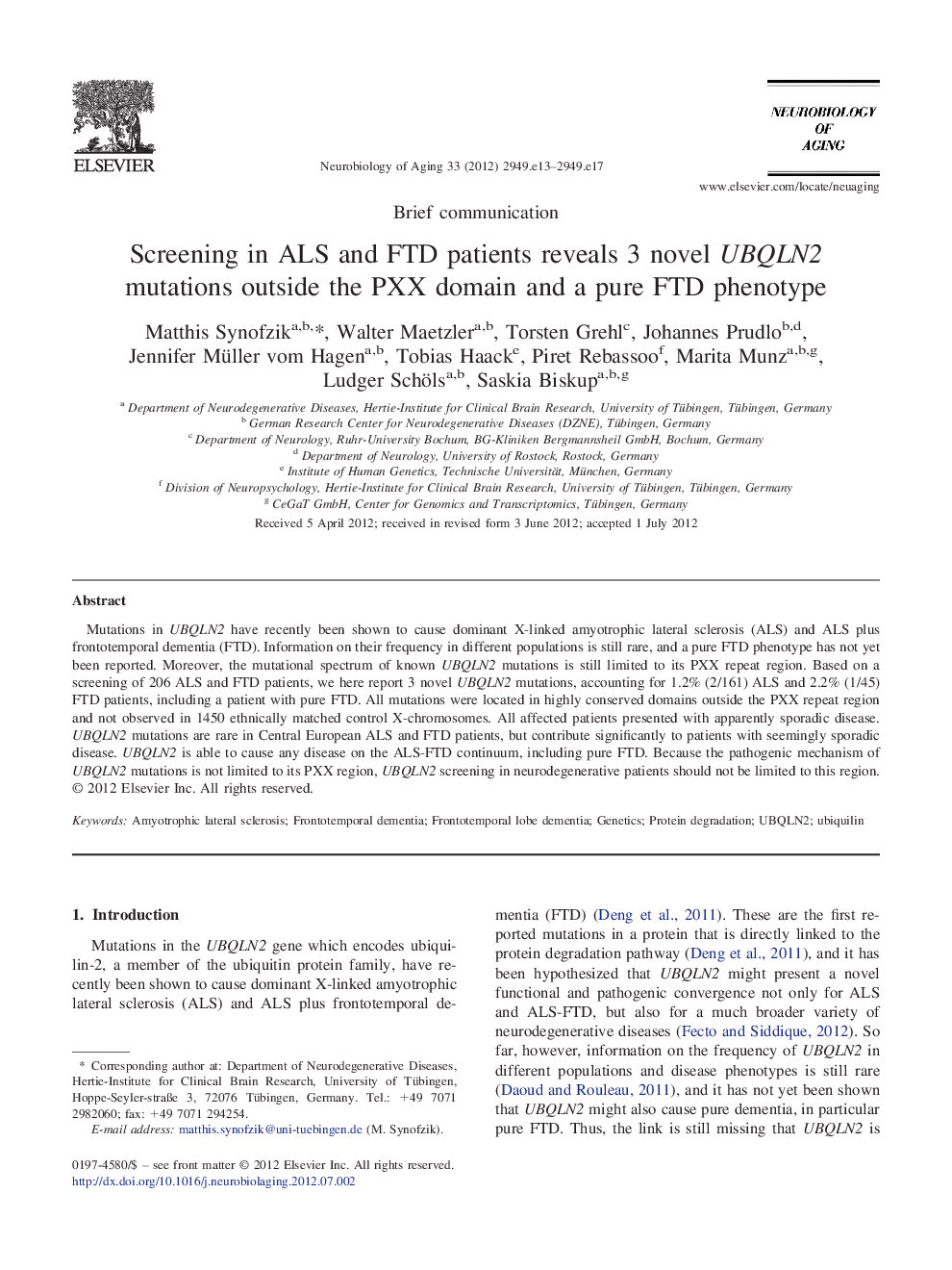| Article ID | Journal | Published Year | Pages | File Type |
|---|---|---|---|---|
| 6808110 | Neurobiology of Aging | 2012 | 5 Pages |
Abstract
Mutations in UBQLN2 have recently been shown to cause dominant X-linked amyotrophic lateral sclerosis (ALS) and ALS plus frontotemporal dementia (FTD). Information on their frequency in different populations is still rare, and a pure FTD phenotype has not yet been reported. Moreover, the mutational spectrum of known UBQLN2 mutations is still limited to its PXX repeat region. Based on a screening of 206 ALS and FTD patients, we here report 3 novel UBQLN2 mutations, accounting for 1.2% (2/161) ALS and 2.2% (1/45) FTD patients, including a patient with pure FTD. All mutations were located in highly conserved domains outside the PXX repeat region and not observed in 1450 ethnically matched control X-chromosomes. All affected patients presented with apparently sporadic disease. UBQLN2 mutations are rare in Central European ALS and FTD patients, but contribute significantly to patients with seemingly sporadic disease. UBQLN2 is able to cause any disease on the ALS-FTD continuum, including pure FTD. Because the pathogenic mechanism of UBQLN2 mutations is not limited to its PXX region, UBQLN2 screening in neurodegenerative patients should not be limited to this region.
Keywords
Related Topics
Life Sciences
Biochemistry, Genetics and Molecular Biology
Ageing
Authors
Matthis Synofzik, Walter Maetzler, Torsten Grehl, Johannes Prudlo, Jennifer Müller vom Hagen, Tobias Haack, Piret Rebassoo, Marita Munz, Ludger Schöls, Saskia Biskup,
